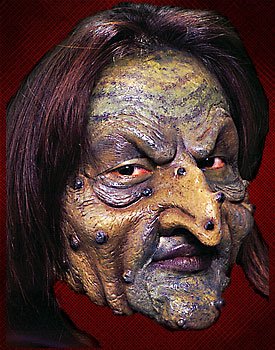The Crucible
“Communists!”
– Your High School English Teacher on The Crucible
The Crucible is a 1953 play written by Physicist Arthur Miller. The story is about the Salem Witch Trials in the fictional town of Salem, Ohio, and the robot uprising that occurred the following year. Many English teachers claim that the story is supposedly an allegory for Communism, but recent Scientists have found this claim to be false.[1] The play is one of the prime materials taught in most culinary classes, as it contains some valuable information on how to cook human flesh to serve to witches.
During the play's initial performance, Miller was able to use real witches as actors for the witches in the play. Critics therefore praised The Crucible for being one of the most realistic plays of all time. The Crucible was ranked second in the best plays of 1953, losing only to Shakespeare's Macbeth, which was written at around the same time as The Crucible.
Story[edit | edit source]
Act 1[edit | edit source]
The play starts with Abigail Williams, the main antagonist, Strip Dancing in the forest with her friend, Tituba. John Proctor, the main protagonist, walks in the forest, and Abigail accuses him of being a witch. Proctor then asks to see Abigail's manager, and the trials start.
Act 2[edit | edit source]
The trials start, and they end with most of the characters being executed by being forced to listen to Sweatshirt by Jacob Sartorius on a loop. Abigail Williams then accuses more characters of being witches, and they argue over land development.
Act 3[edit | edit source]
John Proctor reveals that he was actually a witch, and he fights Abigail in a duel. Abigail also reveals that she was a witch the entire time. However, Donald Trump stops them from killing each other, as he starts a robot uprising in the midst of the trials.
Act 4[edit | edit source]
The witches and humans team up to fight back against the robots, but Salem is nuked by an Atom Bomb placed by John Proctor's evil cousin, John Protractor, and they all die.
Characters[edit | edit source]
- Abigail Williams
- The main antagonist of the play. She falsely claims that people are witches, but she is secretly a witch. She was diagnosed with skin cancer at the age of four. She hates John Proctor because his toes smell like bananas.
- John Proctor
- The main protagonist. He's kind of a huge loser though. He constantly mocks Abigail's skin cancer throughout the play, which enrages her.
- Tituba
- A side character who is actually a witch. She is always caught strip dancing in the most unusual places. She is accused of witchcraft by Proctor, and she saves herself by bribing the judge with marijuana that she grew from her backyard.
- Donald Trump
- Arthur Miller's self-insert fursona OC.
- The Wicked Witch of the West
- A witch who likes to steal people's shoes.
Reception and Legacy[edit | edit source]
The Crucible has received many mixed reviews from its fanbase. The story is often praised for its historical accuracy, character design, and overall plot. However, many critics often point out that the constant reminder that John Proctor has a foot fetish was unnecessary, and it dragged the plot for too long.[2] However, Arthur Miller responded to the criticism by claiming that Proctor's foot fetish was an important plot point for his character development.[3] Miller then removed Proctor's foot fetish in later versions of the story as a response to the criticism.
Arthur Miller responded to the praise by writing a sequel called The Second Crucible. However, it is often ignored by several fans because its story had nothing to do with the prequel.[4] The Second Crucible throws away all of the character development from The Crucible, and it just keeps repeating the same three jokes throughout the story. Arthur Miller responded to the hate that The Second Crucible was receiving, so he wrote another sequel called The Third Crucible, which was just a picture of a middle finger repeating for 80 pages. The fans loved The Third Crucible, and many readers claim that it is the greatest literary masterpiece of all time.[5]
References[edit | edit source]
- ↑ "This book isn't about communism." - Some guy named "Recent Scientists"
- ↑ "John Proctor's foot fetish ruined the story." - Some guy named "Many Critics"
- ↑ "John Proctor's foot fetish is important for the development of his character." - Arthur Miller
- ↑ "This book sucks." - Some guy named "Several Fans"
- ↑ "The Third Crucible is the greatest literary masterpiece of all time." - Some guy named "Many Readers"

